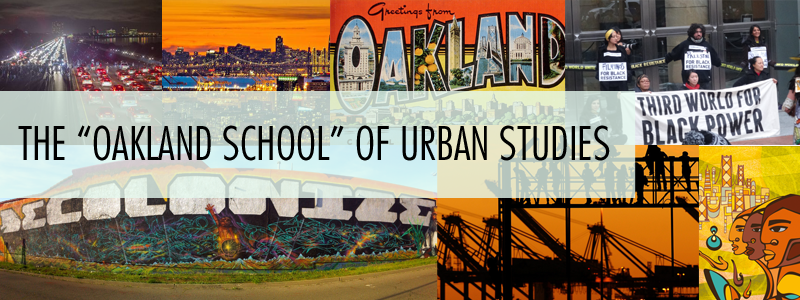Oakland’s Changing Narrative
by Dorie Perez
I was drawn to the critique of Oakland that our collective initiated as an academic exercise and aware of its potential to articulate the competing visions of an imagined future for a city currently undergoing mass processes of change. As space, the planning narratives of design and social behavior, proceed placemaking, or the deliberate and ongoing projects of cultural connection to the built environment, this focus on social and physical change amidst a nationally celebrated “cultural moment” made me wonder about the city of 2011 I had left. Would I recognize it now, forever oriented to the nexus of 14th and Broadway and the civic institutions allowing such seismic change to occur?
Our endeavor is as disparate as the group assembled. We are students of geography, cultural studies, planning and anthropology. Our aim is a moving target of reflexivity even as we search for a “grid of meaning,” a toehold to understand the pluralism of efforts by Oaklanders to belong, engage and endure as rents rise, people move and the urban landscape changes.
The significance of the city’s history, traditionally thought of in mainstream discourse as a white and black racial divide (Self, 2003; Rhomberg, 2002), intertwined with the interwar Labor movement, is muted as the city becomes, like San Francisco a decade ago, “annexed” by outside capital (Solnit, 2014). How can we collectively help define, if that is possible, Oakland’s cultural “moment,” even as we stay attuned to the historical antecedents that have laid out the spatial and social relationships of today’s city? David Harvey (2000) discusses “spaces of hope” as physical sites of communities’ desires to manifest themselves. The linkage between space and hope, staking a claim and recognition are evident in the discourse surrounding the need for queer space and the recursive definition of contested black spaces found in our monthly readings. For my own scholarship, I am interested in exploring the need for balance between highlighting and exploiting a community’s sense of place, the self-styled definitions of placemaking within a community that can turn into “branding” by external forces looking to capitalize an idea. This narrative path, from idea to movement, and its broad conception as part of the development of complex, pluralistic social memory in the urban context makes Oakland such a fascinating place to do work, even as I admire it from afar.
Tags: David Harvey, Oakland history, Oakland School Meeting, placemaking, spaces of hope
